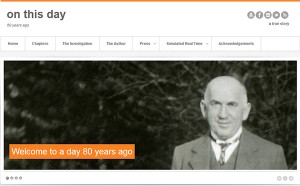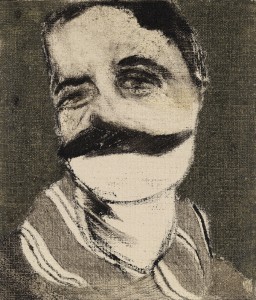Since January 30, 2013 you can find documents and photographs from our archival collections and those of the Leo Baeck Institute in our Online Showcase. We are, of course, not the only ones producing work online using historical sources as witnesses to the time of National Socialism. I have looked around and would like to use this post to make some recommendations:
 An impressive example is Torkel S. Wächter’s project. The Swedish writer arranged together 32 postcards when he decided to investigate the history of his German-Jewish family. His father Walter Wächter fled to Sweden in 1938 and began regularly receiving postcards from his parents, who had remained in Germany. Torkel S. Wächter created the internet project www.32postkarten.com out of them and in 2010/2011 – 70 years later, to the day, after the card was written – he published these last life testimonies of his grandparents, annotated and placed in historical context. Wächter is now again presenting his longstanding engagement with his family’s history as an online project: www.onthisday80yearsago.com. In a literary form – with the aid of letters, notes from journals, and official documents, he tells the story of his grandfather Gustav Wächter, a tax officer who lost his job due to his Jewish heritage and office scheming. Torkel S. Wächter published the chapters from January 30 to July 2, 2013 in “simulated real-time”, as he calls it, rather like a re-enactment of the events of 80 years ago. A serialized novel, a weblog, and memory itself merge together harmoniously here. → continue reading
An impressive example is Torkel S. Wächter’s project. The Swedish writer arranged together 32 postcards when he decided to investigate the history of his German-Jewish family. His father Walter Wächter fled to Sweden in 1938 and began regularly receiving postcards from his parents, who had remained in Germany. Torkel S. Wächter created the internet project www.32postkarten.com out of them and in 2010/2011 – 70 years later, to the day, after the card was written – he published these last life testimonies of his grandparents, annotated and placed in historical context. Wächter is now again presenting his longstanding engagement with his family’s history as an online project: www.onthisday80yearsago.com. In a literary form – with the aid of letters, notes from journals, and official documents, he tells the story of his grandfather Gustav Wächter, a tax officer who lost his job due to his Jewish heritage and office scheming. Torkel S. Wächter published the chapters from January 30 to July 2, 2013 in “simulated real-time”, as he calls it, rather like a re-enactment of the events of 80 years ago. A serialized novel, a weblog, and memory itself merge together harmoniously here. → continue reading
